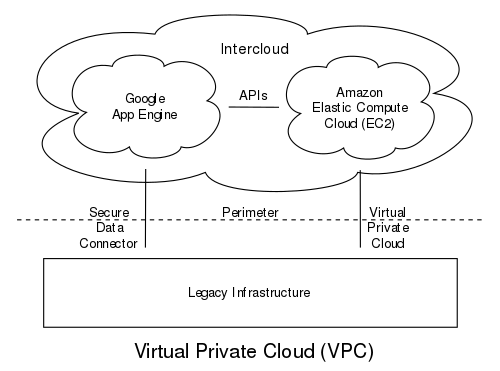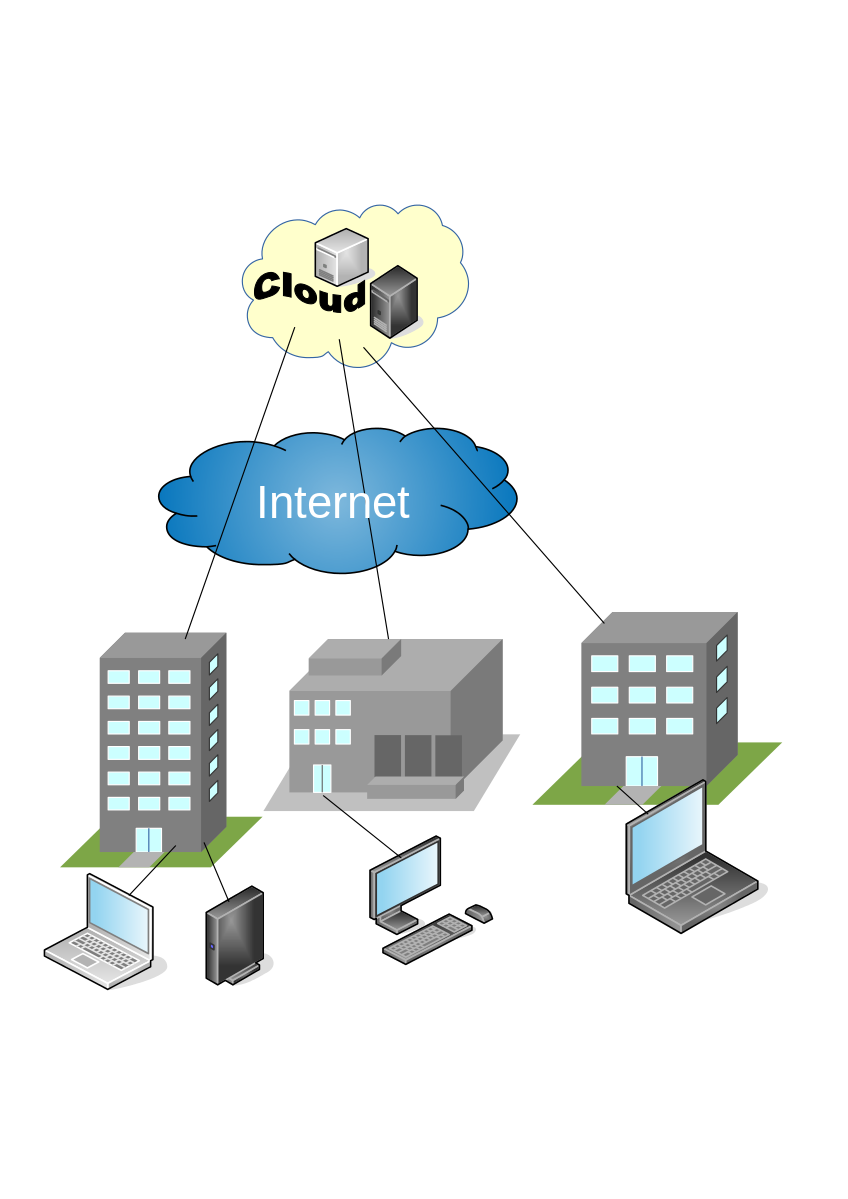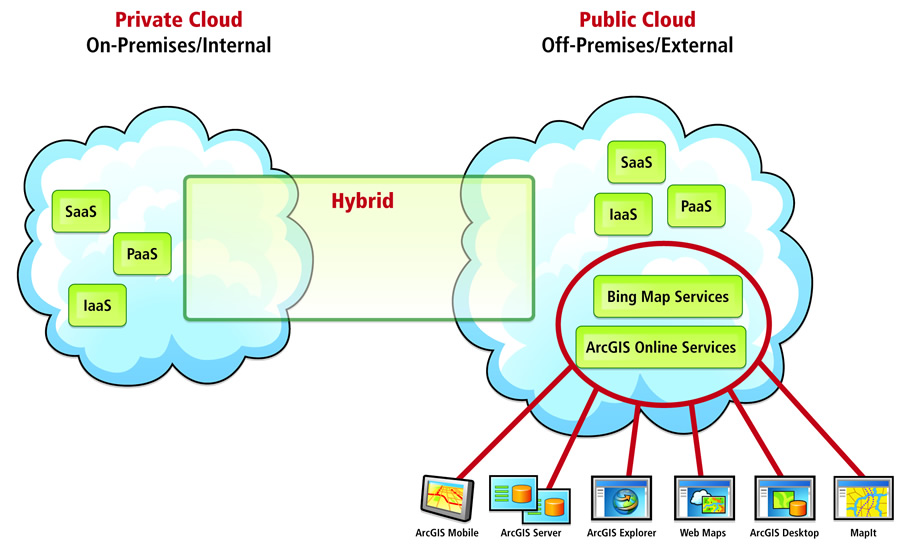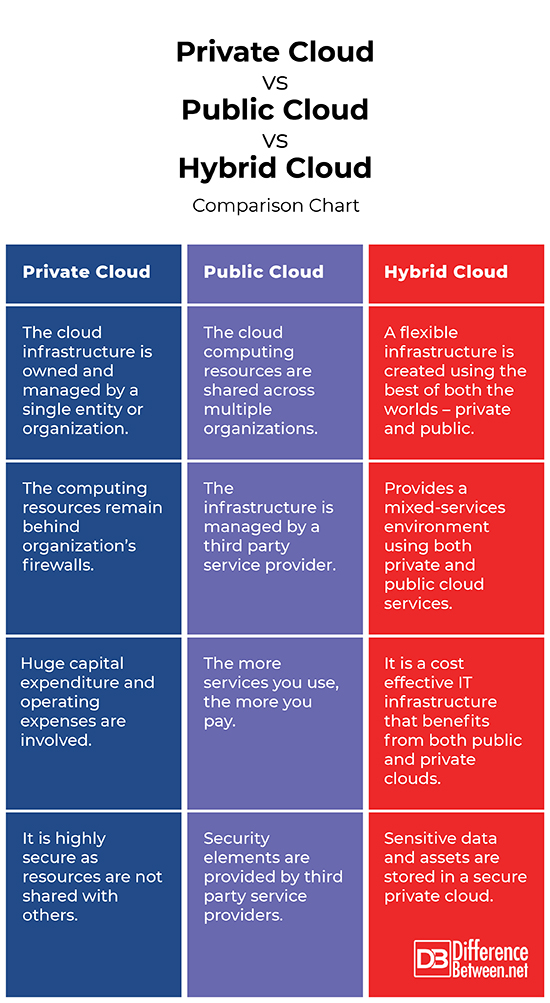Difference Between Private Cloud, Public Cloud and Hybrid Cloud
Depending on the exclusivity of cloud offerings meaning for whom the cloud is created for and who are allowed to use the cloud services, the cloud infrastructure can be categorized as three types: Public Cloud, Private Cloud, and Hybrid Cloud. We take a look at some distinction points to consider before choosing the right kind of cloud for your business or organization.

What is Private Cloud?
A private cloud is quite similar to the traditional data center ecosystem in that services are provided exclusively to the entities within an organization. Similarly, a private cloud is a closed-access environment where the entire cloud resources, including the servers, hardware, storage and networking assets are owned and managed by a single organization who is in full control of the cloud environment.

What is Public Cloud?
A public cloud is the most common cloud infrastructure model where the cloud computing resources and assets are distributed across multiple organizations. The cloud infrastructure, including the computing resources and assets are owned and managed by a third-party cloud vendor. The best example of a public cloud is Microsoft Azure, a public cloud computing platform for managing cloud services through data centers managed by Microsoft.

What is Hybrid Cloud?
A hybrid cloud, as the name suggests, is a hybrid cloud computing infrastructure that provides the best of both the worlds – private cloud and public cloud. It combines the agility of an on-premise cloud infrastructure with the security and reliability of a public cloud to create one flexible, multi-services cloud infrastructure.
Difference between Private Cloud, Public Cloud and Hybrid Cloud
Model
– A private cloud, as the name suggests, is an exclusive cloud deployment model wherein the entire cloud infrastructure, which is the physical servers, networking, storage, etc., is owned and managed by a single entity or organization. There are no commercial clients involved and the services are offered either over the internet or on company-owned on-premises IT infrastructure. A public cloud is a multi-tenant environment wherein a third-party cloud provider like AWS or Microsoft Azure provides the cloud infrastructure, which is shared among multiple users. A hybrid cloud, on the other hand, is a combination of cloud offerings from at least one public cloud and one private cloud to create a single flexible infrastructure, allowing data and applications to be shared between the two.
Control
– Private cloud is a single-tenancy environment meaning the cloud offerings are exclusive to a single organization which owns and controls the entire cloud infrastructure. The private cloud is either locally hosted on an on-site facility owned by the organization or hosted by a third party provider. A public cloud is the most common cloud deployment model wherein the cloud computing resources, including the hardware, servers and storage, everything are owned and managed by a third party service provider, and the services are automatically shared among the users over the Internet. In a hybrid cloud environment, the cloud infrastructure leverages both private and public cloud services, and an on-premise environment to provide a mixed-services environment.
Cost
– The cost depends on an organization’s ability to manage its IT infrastructure. A private cloud is under full control of the organization and no resources are shared outside the organization. So, huge capital expenses are involved in a private cloud as the organization has to purchase all the required hardware and manage its own dedicated IT team, plus there are operating expenses involved. With a public cloud, there is no initial capital expenses involved but you have to pay for the services you use as per the pay-as-you-go model, and the more services you use, the more you pay. So, you may end up paying more, if you plan to use the public cloud services for a really long time. The hybrid cloud offers the best of both the worlds, allowing you to use the on-premises IT infrastructure without paying any subscription fees to the public cloud providers.
Security
– Private clouds are great for organizations that deal with more sensitive data every day as the organization is in total control of everything, from management to security, and the data and applications remain on company’s on-premise data centers. Also, communication occurs over private leased, secured channels with some high-end encryption. With a public cloud, the cloud services may be distributed across multiple data centers, and you share the same computing resources with other organizations. So, security elements are provided by third party service providers, making it fairly secure. But no system is 100% safe, so there are always risks associated with hosting data both locally and off-shore. With a hybrid cloud, the non-sensitive assets are moved to the public cloud and sensitive data and assets are stored in a secure private cloud.
Private Cloud vs. Public Cloud vs. Hybrid Cloud: Comparison Chart

Summary
While many enthusiasts bank on a pre-play public cloud environment because it has some advantages like lower costs, less maintenance, scalable infrastructure, and so on. But it also has its fair share of limitations and issues. Private clouds are great for organizations that require secured processing and storage. Because the cloud infrastructure is owned and managed by the organization and the computing resources sit behind the organization’s firewalls, no resources are shared outside the organization. Hybrid cloud, on the other hand, is a cost-effective cloud infrastructure that offers the benefits of both the worlds, leveraging services of both public and private cloud. So, non sensitive data and applications sit on the public cloud whereas sensitive data are moved to the private cloud.
- Difference Between Caucus and Primary - June 18, 2024
- Difference Between PPO and POS - May 30, 2024
- Difference Between RFID and NFC - May 28, 2024
Search DifferenceBetween.net :
Leave a Response
References :
[0]Bond, James. The Enterprise Cloud: Best Practices for Transforming Legacy IT. California, United States: O'Reilly Media, 2015. Print
[1]Shrivastwa, Alok. Hybrid Cloud for Architects: Build robust hybrid cloud solutions using AWS and OpenStack. Birmingham, United Kingdom: Packt Publishing, 2018. Print
[2]Reznik, Pini, et al. Cloud Native Transformation: Practical Patterns for Innovation. California, United States: O'Reilly Media, 2019. Print
[3]Keogh, Jim. Need-To-Know Technologies for a Successful Future. Berlin, Germany: Walter de Gruyter GmbH, 2018. Print
[4]Chao, Lee. Cloud Computing Networking: Theory, Practice, and Development. Florida, United States: CRC Press, 2015. Print
[5]Image credit: https://upload.wikimedia.org/wikipedia/commons/thumb/b/b2/Virtual_Private_Cloud_%28VPC%29.svg/500px-Virtual_Private_Cloud_%28VPC%29.svg.png
[6]Image credit: https://commons.wikimedia.org/wiki/File:Public_Cloud.svg
[7]Image credit: https://commons.wikimedia.org/wiki/File:Hybrid_cloud.jpg
